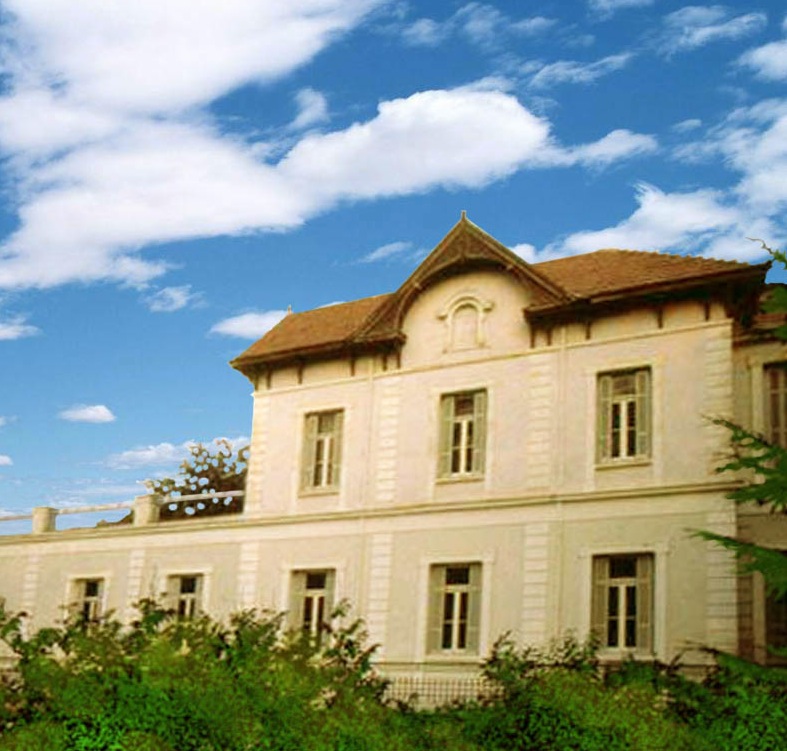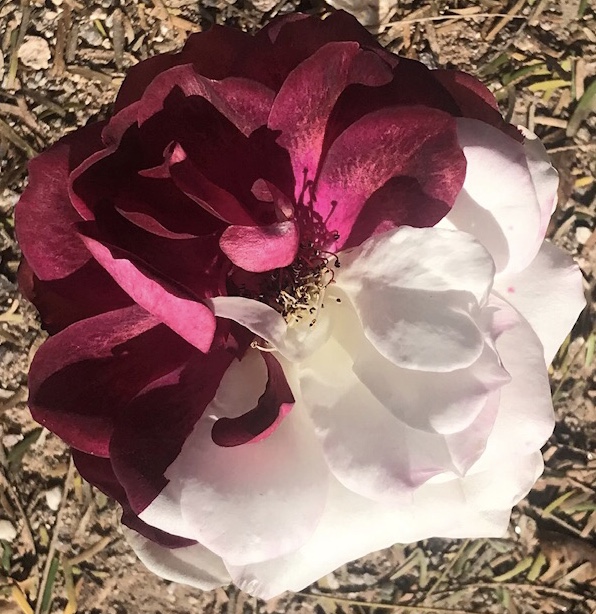|
ICNCP
The ''International Code of Nomenclature for Cultivated Plants'' (ICNCP), is a guide to the rules and regulations for naming cultigens, plants whose origin or selection is primarily due to intentional human activity. It is also known as Cultivated Plant Code. Cultigens under the purview of the ICNCP include ''cultivars'', Groups ('' cultivar groups''), and '' grexes''. All organisms traditionally considered to be plants (including algae and fungi) are included. Taxa that receive a name under the ''ICNCP'' will also be included within taxa named under the International Code of Nomenclature for algae, fungi, and plants, for example, a cultivar is a member of a species. Brief history The first edition of the ''ICNCP'', which was agreed in 1952 in Wageningen and published in 1953, has been followed by seven subsequent editions – in 1958 (Utrecht), 1961 (update of 1958), 1969 (Edinburgh), 1980 (Seattle), 1995 (Edinburgh), 2004 (Toronto) and 2009 ( Wageningen). The ninth (most r ... [...More Info...] [...Related Items...] OR: [Wikipedia] [Google] [Baidu] |
Cultivar Group
A Group (previously cultivar-groupInternational Code of Nomenclature for Cultivated Plants, 4th edition (1969), 5th edition (1980) and 6th edition (1995)) is a formal category in the ''International Code of Nomenclature for Cultivated Plants'' (''ICNCP'') used for cultivated plants (cultivars) that share a defined characteristic. It is represented in a botanical name by the symbol Group or Gp. "Group" or "Gp" is always written with a capital ''G'' in a botanical name, or ''epithet''. The Group is not italicized in a plant's name. The ''ICNCP'' introduced the term and symbol "Group" in 2004, as a replacement for the lengthy and hyphenated "cultivar-group", which had previously been the category's name since 1969. For the old name "cultivar-group", the non-standard abbreviation cv. group or cv. Group is also sometimes encountered. There is a slight difference in meaning, since a cultivar-group was defined to comprise cultivars, whereas a Group may include individual plants. The ICN ... [...More Info...] [...Related Items...] OR: [Wikipedia] [Google] [Baidu] |
Cultigen
A cultigen () or cultivated plant is a plant that has been deliberately altered or selected by humans; it is the result of artificial selection. These plants, for the most part, have commercial value in horticulture, agriculture or forestry. Because cultigens are defined by their mode of origin and not by where they are growing, plants meeting this definition remain cultigens whether they are naturalised in the wild, deliberately planted in the wild, or growing in cultivation. Cultigens arise in the following ways: * selections of variants from the wild or cultivation including vegetative sports (aberrant growth that can be reproduced reliably in cultivation) * plants that are the result of plant breeding and selection programs * genetically modified plants (plants modified by the deliberate implantation of genetic material) * graft-chimaeras (plants grafted to produce mixed tissue, the graft material possibly from wild plants, special selections, or hybrids). Naming Cultigens ... [...More Info...] [...Related Items...] OR: [Wikipedia] [Google] [Baidu] |
Cultivated Plant Taxonomy
Cultivated plant taxonomy is the study of the theory and practice of the science that identifies, describes, classifies, and names cultigens—those plants whose origin or selection is primarily due to intentional human activity. Cultivated plant taxonomists do, however, work with all kinds of plants in cultivation. Cultivated plant taxonomy is one part of the study of horticultural botany which is mostly carried out in botanical gardens, large nurseries, universities, or government departments. Areas of special interest for the cultivated plant taxonomist include: searching for and recording new plants suitable for cultivation ( plant hunting); communicating with and advising the general public on matters concerning the classification and nomenclature of cultivated plants and carrying out original research on these topics; describing the cultivated plants of particular regions (horticultural floras); maintaining databases, herbaria and other information about cultivated plant ... [...More Info...] [...Related Items...] OR: [Wikipedia] [Google] [Baidu] |
Cultivar
A cultivar is a type of cultivated plant that people have selected for desired traits and when propagated retain those traits. Methods used to propagate cultivars include: division, root and stem cuttings, offsets, grafting, tissue culture, or carefully controlled seed production. Most cultivars arise from purposeful human manipulation, but some originate from wild plants that have distinctive characteristics. Cultivar names are chosen according to rules of the International Code of Nomenclature for Cultivated Plants (ICNCP), and not all cultivated plants qualify as cultivars. Horticulturists generally believe the word ''cultivar''''Cultivar'' () has two meanings, as explained in ''Formal definition'': it is a classification category and a taxonomic unit within the category. When referring to a taxon, the word does not apply to an individual plant but to all plants that share the unique characteristics that define the cultivar. was coined as a term meaning "cultivated variety ... [...More Info...] [...Related Items...] OR: [Wikipedia] [Google] [Baidu] |
Grex (horticulture)
The term ''grex'' (plural ''greges'' or ''grexes''; abbreviation gx), derived from the Latin language, Latin noun , , meaning 'flock', has been expanded in botanical nomenclature to describe hybrids of orchids, based solely on their parentage. Grex names are one of the three categories of plant names governed by the International Code of Nomenclature for Cultivated Plants; within a grex the ''cultivar group'' category can be used to refer to plants by their shared characteristics (rather than by their parentage), and individual orchid plants can be selected (and propagated) and named as cultivars. Botanical nomenclature of hybrids The horticultural nomenclature of grexes exists within the framework of the botanical nomenclature of hybrid plants. Interspecific hybrids occur in nature, and are treated under the International Code of Nomenclature for algae, fungi, and plants as nothospecies, ('notho' indicating hybrid). They can optionally be given Linnean Binomial nomenclature, bin ... [...More Info...] [...Related Items...] OR: [Wikipedia] [Google] [Baidu] |
William Stearn
William Thomas Stearn (16 April 1911 – 9 May 2001) was a British botanist. Born in Cambridge in 1911, he was largely self-educated, and developed an early interest in books and natural history. His initial work experience was at a Cambridge bookshop, but he also had a position as an assistant in the university botany department. At the age of 29 he married Eldwyth Ruth Alford, who later became his collaborator, and he died in London in 2001. While at the bookshop, he was offered a position as a librarian at the Royal Horticultural Society in London (1933–1952). From there he moved to the Natural History Museum as a scientific officer in the botany department (1952–1976). After his retirement, he continued working there, writing, and serving on a number of professional bodies related to his work, including the Linnean Society, of which he became president. He also taught botany at Cambridge University as a visiting professor (1977–1983). Stearn is known for ... [...More Info...] [...Related Items...] OR: [Wikipedia] [Google] [Baidu] |
Mespilus
''Mespilus'', commonly called medlar, is a monotypic genus of flowering plants in the family Rosaceae containing the single species ''Mespilus germanica'' of southwest Asia. It is also found in some countries in the Balkans, especially in Albanian regions. A second proposed species, ''Mespilus canescens'', discovered in North America in 1990, proved to be a hybrid between ''M. germanica'' and one or more species of hawthorn, and is properly known as ×'' Crataemespilus canescens''. Plant ''Mespilus'' forms deciduous large shrubs to small trees growing up to tall. The fruit is a matte brown pome. History ''Mespilus germanica'' is apparently native only to southwest Asia and southeastern Europe, i.e. near the Black Sea coast and western Mediterranean, and Asia Minor, as well as the Caucasus and northern Iran, but it has an ancient history of cultivation and wild plants exist in a much wider area; it was grown by the ancient Greeks and Romans, beginning in the second century B ... [...More Info...] [...Related Items...] OR: [Wikipedia] [Google] [Baidu] |
Crataegus
''Crataegus'' (), commonly called hawthorn, quickthorn, thornapple, Voss, E. G. 1985. ''Michigan Flora: A guide to the identification and occurrence of the native and naturalized seed-plants of the state. Part II: Dicots (Saururaceae–Cornaceae)''. Cranbrook Institute of Science and University of Michigan Herbarium, Ann Arbor, Michigan. May-tree,Graves, Robert. ''The White Goddess: A Historical Grammar of Poetic Myth'', 1948, amended and enlarged 1966, New York: Farrar, Straus and Giroux. whitethorn, Mayflower, or hawberry, is a genus of several hundred species of shrubs and trees in the family Rosaceae, native to temperate regions of the Northern Hemisphere in Europe, Asia, North Africa, and North America. The name "hawthorn" was originally applied to the species native to northern Europe, especially the common hawthorn ''C. monogyna'', and the unmodified name is often so used in Britain and Ireland. The name is now also applied to the entire genus and to the related Asian ... [...More Info...] [...Related Items...] OR: [Wikipedia] [Google] [Baidu] |
Chimera (biology)
A genetic chimerism or chimera ( ) is a single organism composed of cells with more than one distinct genotype. In animals, this means an individual derived from two or more zygotes, which can include possessing blood cells of different blood types, subtle variations in form (phenotype) and, if the zygotes were of differing sexes, then even the possession of both female and male sex organs. Animal chimeras are produced by the merger of two (or more) embryos. In plant chimeras, however, the distinct types of tissue may originate from the same zygote, and the difference is often due to mutation during ordinary cell division. Normally, genetic chimerism is not visible on casual inspection; however, it has been detected in the course of proving parentage. Another way that chimerism can occur in animals is by organ transplantation, giving one individual tissues that developed from a different genome. For example, transplantation of bone marrow often determines the recipient's ensuin ... [...More Info...] [...Related Items...] OR: [Wikipedia] [Google] [Baidu] |
Charles Jacques Édouard Morren
Charles Jacques Édouard Morren (2 December 1833 – 28 February 1886) was a Belgian botanist, professor of botany and director of the '' Jardin botanique de l'Université de Liège'' from 1857 to 1886. His special field of study was the Bromeliaceae on which family he was the recognized authority. He was the son of Charles François Antoine Morren. He was editor of the journal ''La Belgique Horticole'' in which he published descriptions of numerous new species. He was working on a monograph of the Bromeliaceae when death intervened at a relatively youthful 53 years. His manuscripts and commissioned watercolor plates were sold to Kew Gardens by his widow shortly after his death and examined by John Gilbert Baker and Carl Christian Mez Carl Christian Mez (26 March 1866 – 8 January 1944) was a German botanist and university professor. He is denoted by the author abbreviation when citing a botanical name. Life and work Mez came from a family of industrialists i ... [...More Info...] [...Related Items...] OR: [Wikipedia] [Google] [Baidu] |
Paphiopedilum Lawrenceanum
''Paphiopedilum'', often called the Venus slipper, is a genus of the lady slipper orchid subfamily ''Cypripedioideae'' of the flowering plant family Orchidaceae. The genus comprises some 80 accepted taxa including several natural hybrids. The genus is native to Southeast Asia, the Indian Subcontinent, southern China, New Guinea and the Solomon and Bismarck Islands. The type species of this genus is ''Paphiopedilum insigne''. The species and their hybrids are extensively cultivated, and are known as either paphiopedilums, or by the abbreviation paphs in horticulture. Due to their popularity, Paphiopedilums have been ruthlessly gathered and poached from the wild, making them very rare or extinct there. As soon as a new species or population is discovered, poachers will take the plants for orchid collectors who pay large sums of money. Habitat destruction is an additional factor contributing to their rarity. Description ''Paphiopedilum'' species naturally occur among humus la ... [...More Info...] [...Related Items...] OR: [Wikipedia] [Google] [Baidu] |
Paphiopedilum Callosum
''Paphiopedilum callosum'' is a species of orchid found from Vietnam to northwestern Peninsular Malaysia Peninsular Malaysia ( ms, Semenanjung Malaysia; Jawi: سمننجڠ مليسيا), or the States of Malaya ( ms, Negeri-negeri Tanah Melayu; Jawi: نڬري-نڬري تانه ملايو), also known as West Malaysia or the Malaysian Peninsula, .... It has been investigated and shown promising results in the treatment of cancer. References External links callosum Orchids of Cambodia Orchids of Laos Orchids of Malaysia Orchids of Thailand Orchids of Vietnam Pharmacognosy {{Cypripedioideae-stub ... [...More Info...] [...Related Items...] OR: [Wikipedia] [Google] [Baidu] |


.jpg)





